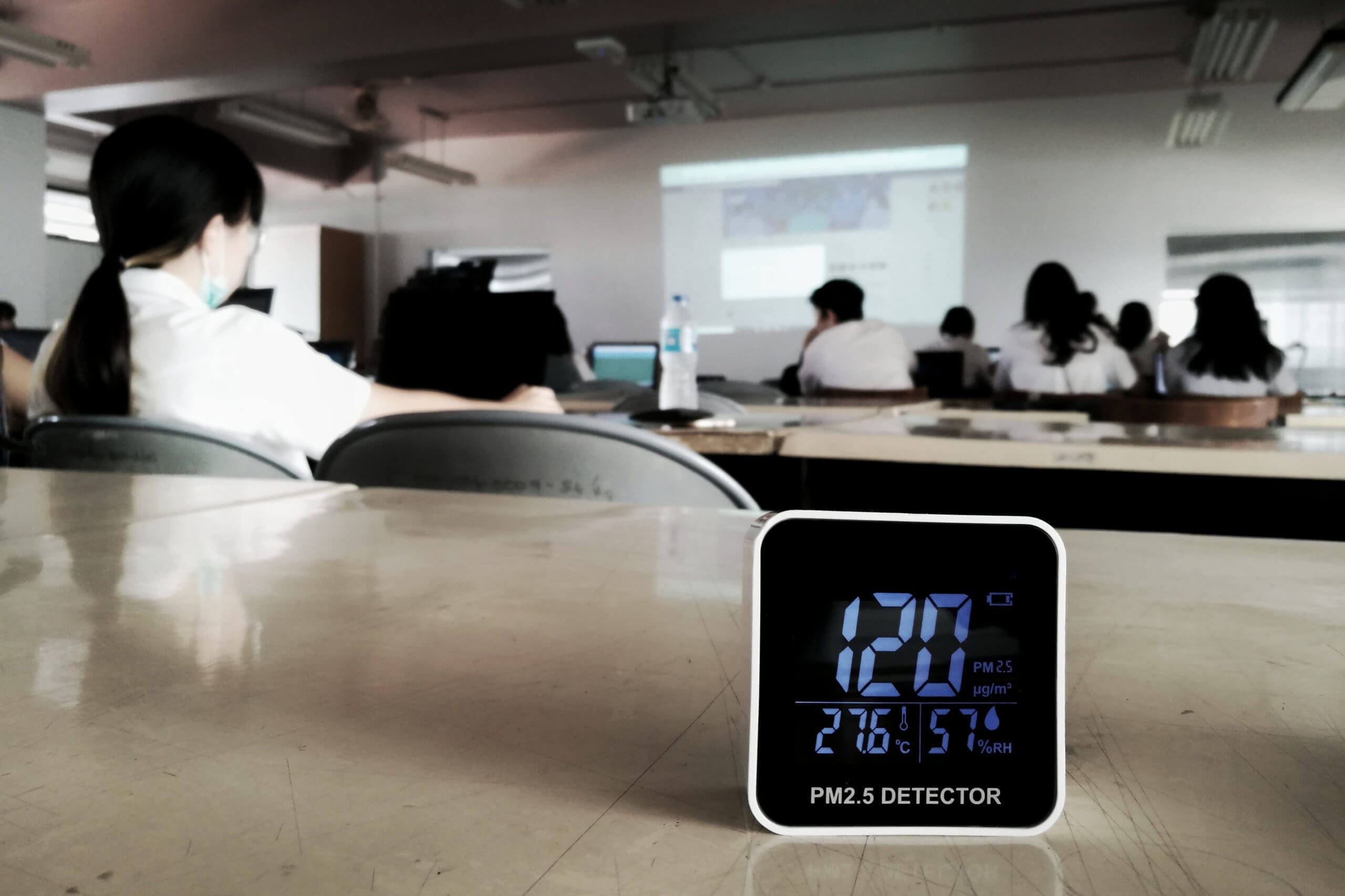It’s no secret that children spend lots of time indoors when they are at school. The pandemic, however, has changed the way students learn. The uncertainty has forced most students to adjust to virtual classrooms in an effort to keep students and school faculty safe. Parents, students and teachers alike want to return to classrooms in 2021. But the question remains, are schools doing enough to improve classroom air quality?
There are many ways mechanical ventilation can help schools reopen their classrooms. We explain how mechanical ventilation improves classroom air quality, and why it’s superior to natural ventilation. We’ll also show how teachers can help ventilate classrooms and why monitoring IAQ with sensors, and filtration matter.
Ventilation Improves Classroom Air Quality
The biggest problem schools face, and what’s stopping them from reopening, revolves around ventilation concerns. The high number of students in an enclosed space requires enough fresh air to exhaust or dilute polluted air. Students and teachers, coupled with VOCs in classrooms, increase the number of pollutant levels indoors. Studies have found that empty classrooms have CO2 levels of around 400 ppm (parts per million). When students are in the classroom, the CO2 levels shoot up to 1,100 ppm in well-ventilated classrooms. In poorly-ventilated classrooms, the CO2 levels dramatically increase to unhealthy levels.
The focus on reopening schools has exposed just how many classrooms have poor ventilation. When opening windows and doors is not proving to be the solution, many schools are looking for mechanical ventilation to help.
Mechanical Ventilation is The Best Way to Improve Classroom Air Quality
There are lots of people saying opening windows is the solution to better ventilation in classrooms. Unfortunately, natural ventilation, simply opening doors and windows to let fresh air in, is not enough. The problem is three-fold.
Before you #openwindows all winter, please talk to a local HVAC professional. Mechanical #ventilation is probably not as much as you think. It’s a real, long-term, year-round, every season solution that is available for every building. Energy-efficient fresh air is possible!!
— IAQ Works (@IaqWorks) December 4, 2020
First, we have a comfort issue. When it’s too cold, hot or humid, an open window or door is uncomfortable. When students are not comfortable, their health and ability to learn are negatively affected. Second, we have an energy waste issue. Having the cooling or heating system on, while also having an open window or door, makes the HVAC system work harder and reduces the lifespan of these expensive commercial systems. Lastly, natural ventilation doesn’t force fresh air in or exhaust stale air consistently.
Teachers Can Help Ventilate
Mechanical ventilation systems make the ventilation process easier. With a system installed, teachers can absolutely help improve classroom air quality by merely turning on the HVAC system about an hour before class starts. This gives the HVAC system time to proactively circulate air through the system’s air filter, bring in fresh outdoor air and remove stagnant air. While students are in class, teachers should ensure the HVAC system’s fan is running the entire school day to keep air quality at safe levels. An hour after school ends is when the HVAC systems should rest.
How IAQ Monitors and Air Filters Tie into Improving Classroom Ventilation
Installing IAQ monitors in every classroom will help teachers and faculty track each room’s indoor air quality. The data it shows will give faculty peace of mind, while also giving tips on problem areas, pollutant levels and tips on improving the air quality.
Air filters in a school’s HVAC system capture pollutants and remove them from circulating in the classroom. Filters are the first line of defense against pollutants. If the HVAC system allows for it, a MERV 13 air filter should be installed to capture more pollutants efficiently without affecting the airflow.
Advocate for Better School Ventilation
Parents, students and faculty should advocate for better air quality in schools to safely reopen. The conversation starts and ends with better ventilation. Across the country, states are throwing money at school districts to improve ventilation and IAQ. Talk to your local IAQ experts and have them come up with a customized strategy for your child’s school. It’s time to prioritize indoor air quality for every district, school and classroom. We can help.




